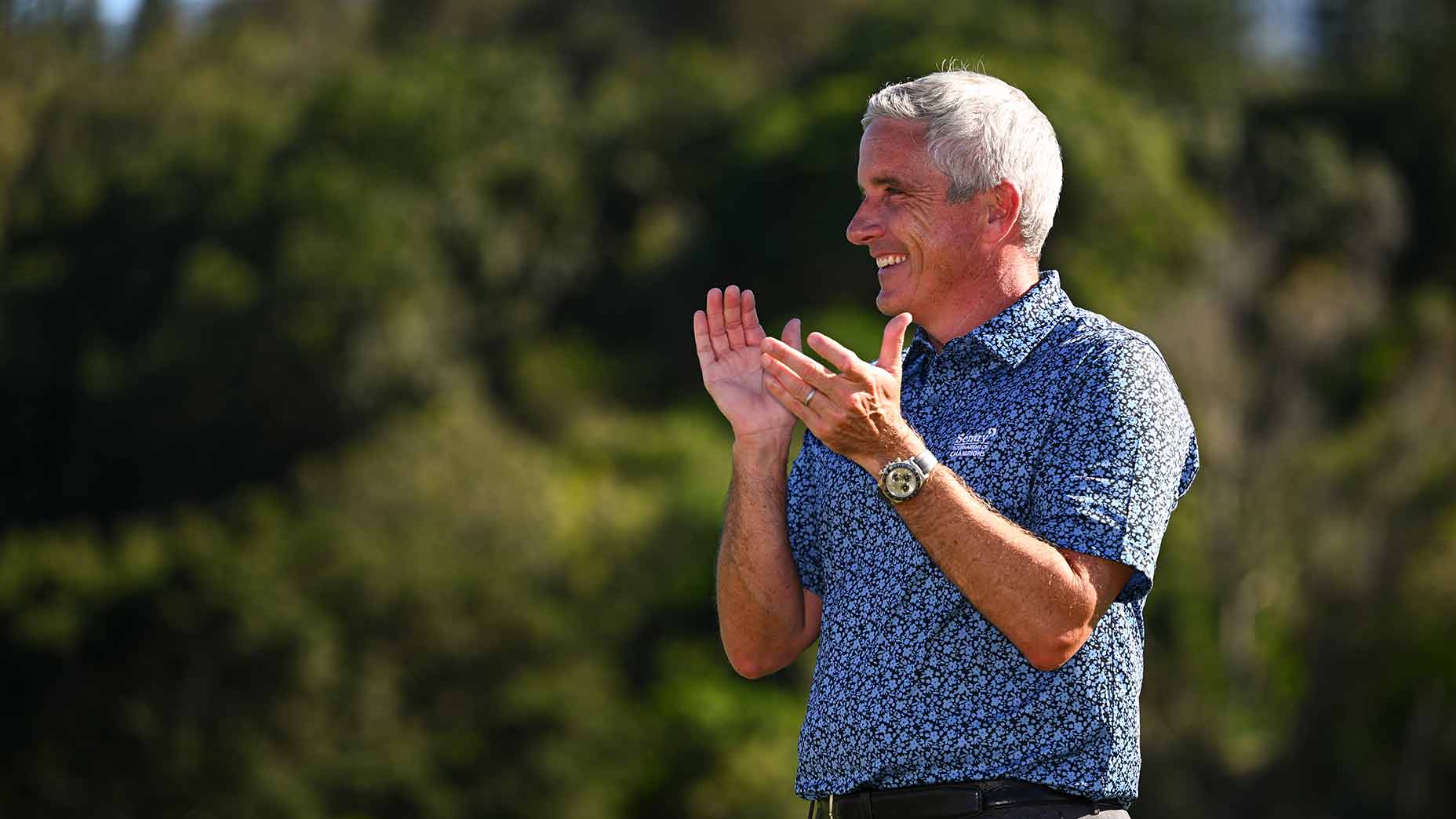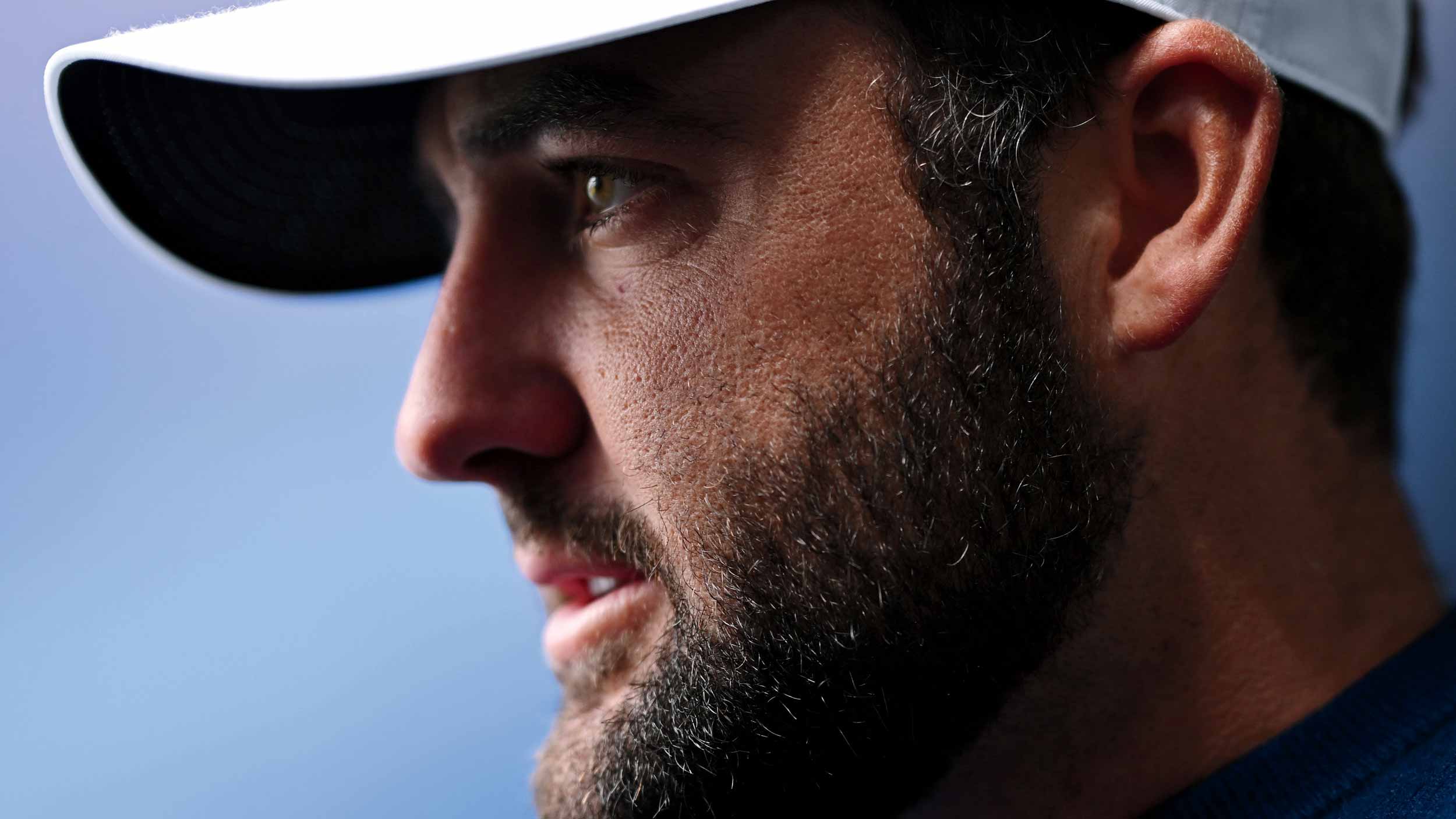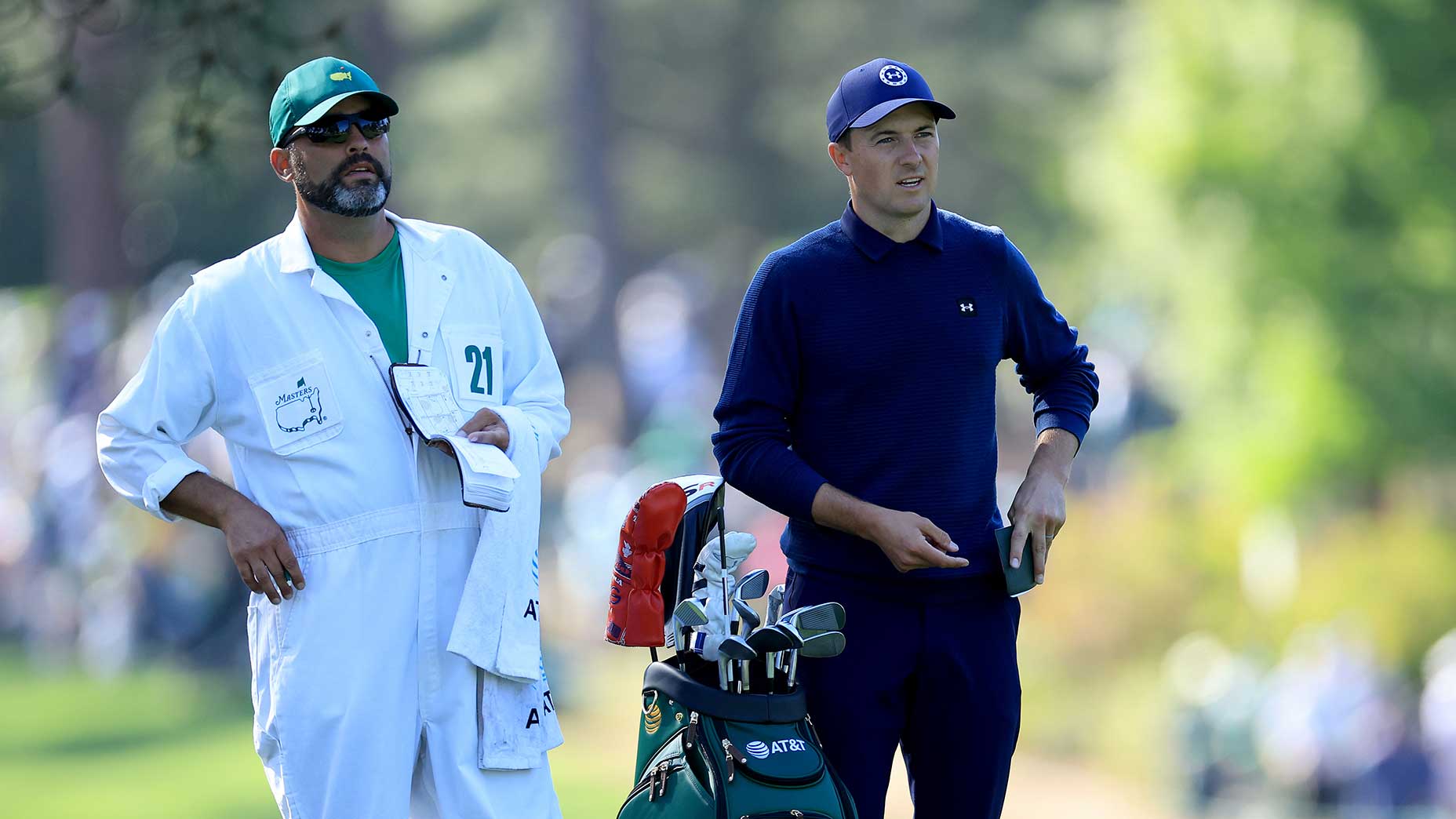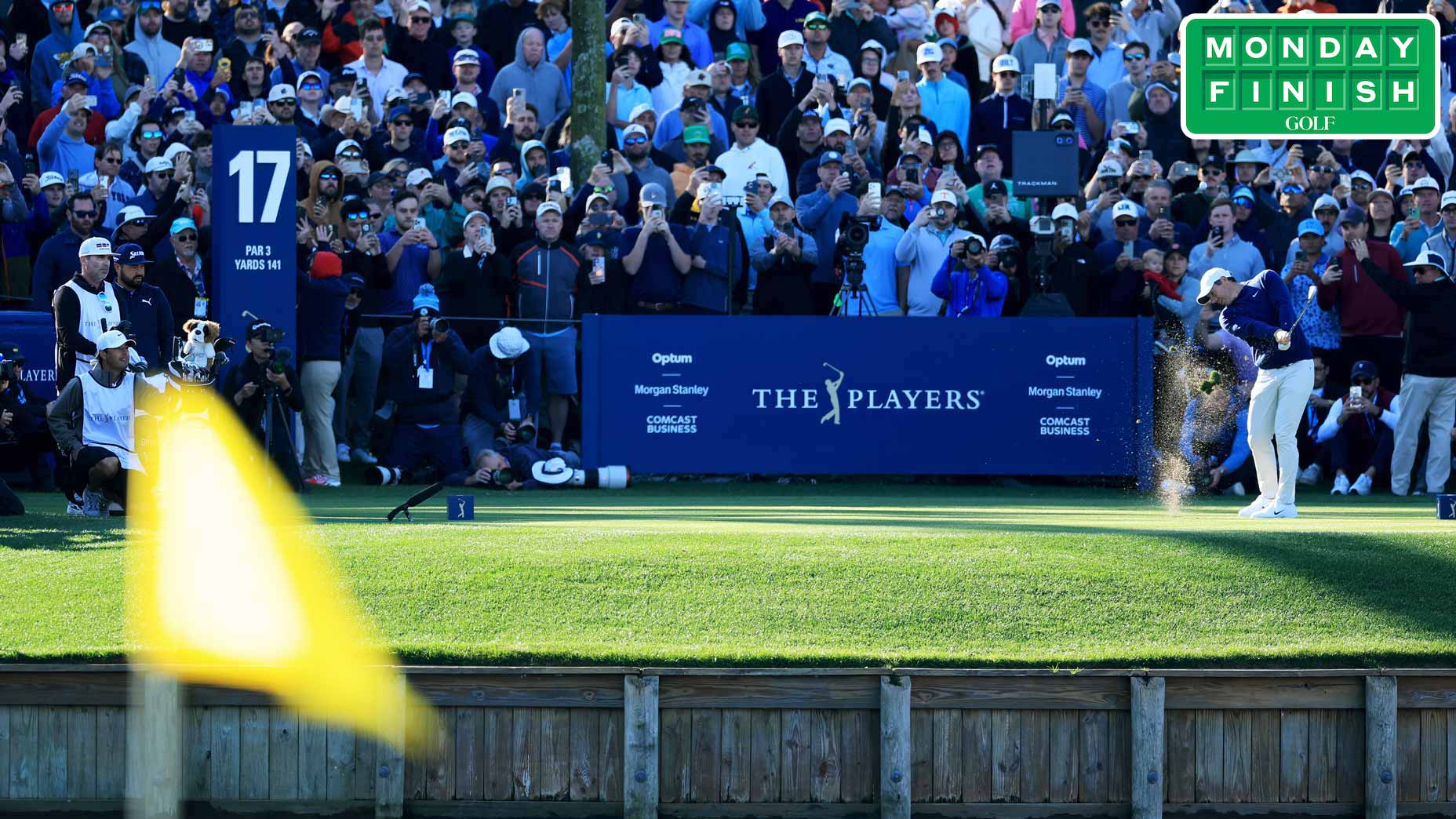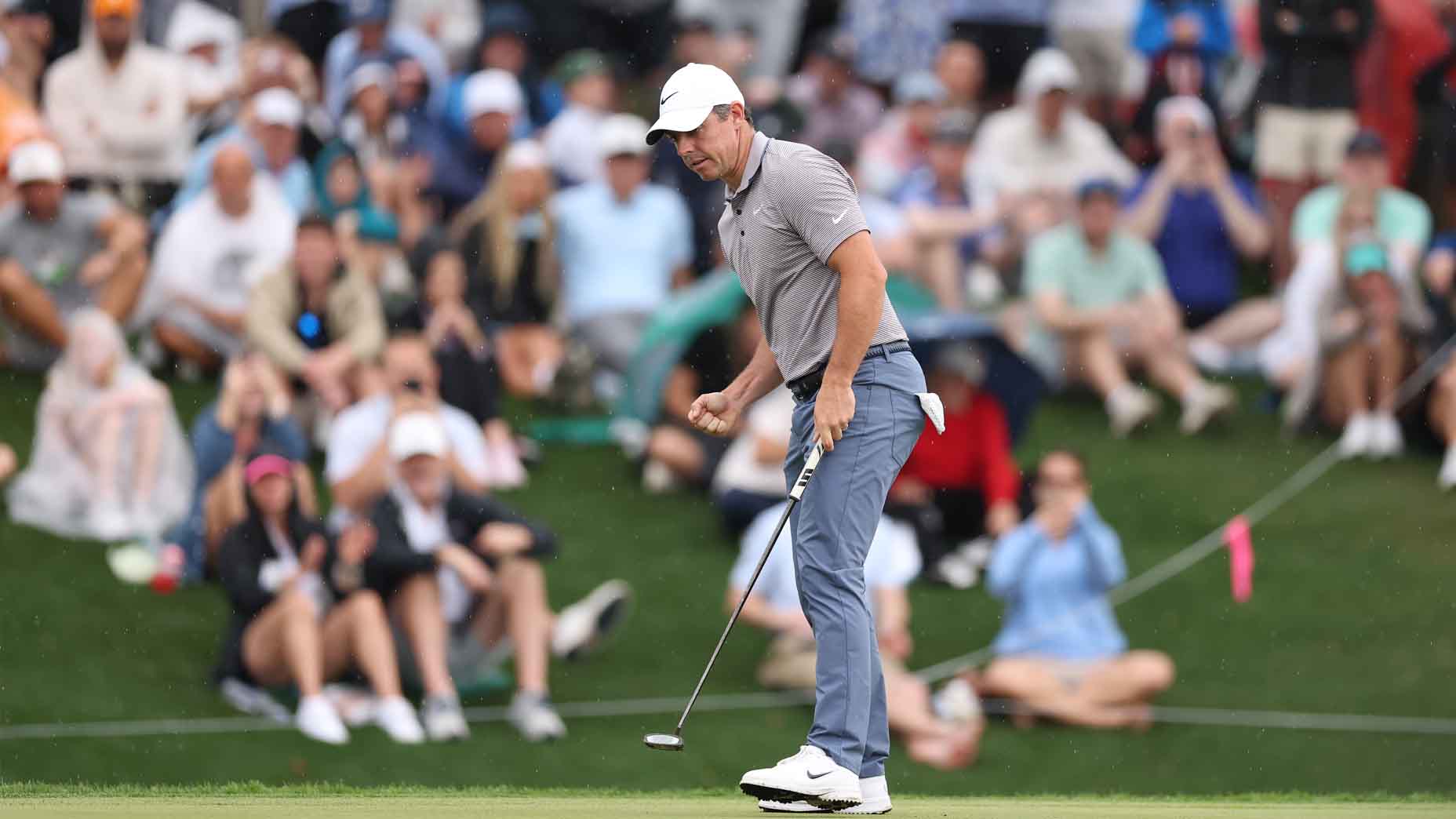PONTE VEDRA BEACH, Fla. — On a sunny Tuesday morning last August, Tiger Woods’ jet touched down in Delaware. Local news cameras captured the moment that he and Rickie Fowler came down the steps and into a waiting rental car, which Woods piloted to the Hotel du Pont. That’s where they were joined later that afternoon by 21 Tour pros, all of whom were in town for that week’s BMW Championship. Officially, the fight to save the PGA Tour had begun.
This was triage in the age of LIV. All summer, the controversial golf startup circuit had gashed the Tour of its players, signing them to lucrative multi-year deals. A handful more were readying to make the leap at the conclusion of the FedEx Cup Playoffs. But the PGA Tour still hadn’t formed a counterattack of its own.
That all changed in the room in Delaware, where Woods and Rory McIlroy presented the Tour’s most valued members with a vision for the future: an exclusive series of events within the PGA Tour’s existing structure that would feature limited fields filled with stars and reward top performers with unprecedented paychecks.
It was a dramatic moment in modern professional golf history. It was a turning point in the fight for the Tour’s future. And it worked. Young Chilean star Joaquin Niemann would leave for LIV just two weeks later, but the other 22 players in attendance agreed in principle to work together to improve the existing product.
There were plenty more meetings in the weeks and months that followed. Members of that same group got together again, sometimes in person and most of the time over Zoom. They conferred with businesspeople, with potential sponsors, with Tour executives, with well-connected financial wizards. Just last week, less than two days before teeing it up at Bay Hill, McIlroy was among those who sat in a seven-hour board meeting working through finalizing a version of the changes first presented in Wilmington.
And this Tuesday, twenty-eight Tuesdays after that initial closed-door player meeting, there was another one — this time with the entire membership invited. At 7:30 a.m. on the second floor of the TPC Sawgrass clubhouse, Tour staff laid out a vision for the circuit’s future in which eight “designated events” will feature just 70-80 players competing for beefed-up purses and beefed-up FedEx Cup points. The top 50 players in the 2023 FedCup standings will receive guaranteed entry into the 2024 designated events, where they’ll be joined by some “hot players” as defined by the FedEx Cup leaders from the beginning of the 2024 season plus a handful chosen from the tournaments immediately preceding the event. The benefits of the structure are clear: Pay your star players more, give your fans better showdowns and a more legible schedule, double down on the Tour’s meritocracy and plug the leak of top pros to LIV.
Play well and get massively rewarded. All good, right?
The Original Plan
On Tuesday, McIlroy recalled the vision for the original Delaware plan. That version, he said, “was very self-serving for the 20 players in the room.”
At the time, there was an immediate need to keep the top pros happy. LIV had already claimed some of the Tour’s most compelling personalities; a few more defections from the players in that room would mean serious problems for the existing structure. Looking back, McIlroy said their proposed model featured fields of just 50-60 players and wouldn’t focus on turnover: only 10 or so players would cycle out of that group every year.
“In Delaware, that first presentation was essentially two separate tours,” Jordan Spieth said on Tuesday.
Commissioner Jay Monahan agreed with that assessment. Decades of prioritizing the needs of the entire membership had suddenly given way to prioritizing the top performers. But the initial proposals went too far and threatened the foundations of the Tour.
“It was delicate,” Monahan said. “If [retention rate] was close to 80 percent and field sizes were a lot smaller, how does that look to the broader PGA Tour membership? How does that look to fans? Is it the most pro-competitive model that we can put forward?”
McIlroy said he was thankful for the edits made in the months that followed. “I think if we had have went down [the original] road, it doesn’t serve the membership anywhere near as well as what this structure does,” he said.
But there was no question who was calling the shots. For decades, the Tour had been comprised of a band of loosely associated individual competitors; now two dozen top dogs were working together, with an even smaller sub-group making decisions and synthesizing feedback. This was all new. Monahan found himself playing a supporting role as Woods and McIlroy led the way. And together the group batted around what Monahan called “a lot of bad ideas” before settling on the final version — which was laid out to the full membership on Tuesday.
Rory McIlroy:
— Dylan Dethier (@dylan_dethier) March 7, 2023
"The emergence of LIV has benefited everyone that plays professional golf … This has caused a ton of innovation at the PGA Tour, and what was an antiquated system has been revamped to mirror where we're at in the world."
The Meeting
At 7:30 a.m., roughly 50-60 players from the 144-player field gathered to hear its leadership. Others skipped the early call, citing family time or extra rest or general disinterest. (“Didn’t feel like starting my day on a bad foot,” one pro said.)
How’d it go with the pros in attendance? That depends on who you ask. According to several players in the room, the actual presentation went on without incident. Tour executives ran players through the most important slides in an effort to answer questions and summarize the changes. Above all, they stressed it was an open system — play well, move up! — and a meritocracy.
In McIlroy’s mind, knowledge is power. The more players know, the easier it is for them to get on board. At least, that’s the theory.
“I think when more information and data was presented to them, the people that maybe had reservations about it came around or at least were more informed on their opinions,” he said.
Max Homa was more realistic about the developing divide, calling the reactions “a pretty big mixed bag.” But he shared McIlroy’s belief that the system stands up to careful evaluation.
“I think if you’re someone like me who’s been in more meetings than I had ever been in prior to this year, I think we grasped the entirety of what has been presented and worked on. I think I’ve been fortunate that a few other players who aren’t in all of those meetings have come up to me and we’ve chatted about them,” Homa told reporters.
But there’s a class of Tour pros who feel boxed out by the process and unhappy with the changes. Sparks flew in a tense Q&A session at the end, where several veteran members expressed their frustrations. Players seemed on board with the broad strokes of the plan but objected to specifics. One pro asked what would happen if the Saudis decided to suddenly double LIV purses — would the Tour’s structure hold up? Nate Lashley questioned the Tour’s process and communication. Lanto Griffin was unsure of the new FedEx Cup points distribution.
“I think the majority of players are okay with the changes. Obviously it’s going to benefit the bigger names, but I think where people are frustrated — and this is pretty much everybody not making the decisions — is it feels like the top 20 players are pretty much deciding what they want,” Griffin said. “They’re tweaking it so we don’t completely lose our mind. But they make the decisions and we find out about it after it’s done.”
His specific objections involved the points available at designated events. The current plan is to have 700 points awarded to the winner of a designated event compared with 500 for a “full-field” event. The points dropoff is steeper at full-field events compared to the deeper designated fields, too.
“Look, these top guys, they deserve it,” Griffin added. “But three times more for points for 10th place — when they’d be 10th out of 70 versus 10th out of 156 with a cut? That feels too far.”
7 intriguing changes to the PGA Tour’s new designated events formatBy: James Colgan
Dylan Frittelli added he thought “a majority” of pros outside the elite group are disgruntled with those new details but added they do see the upside — he says players have expressed frustration “while simultaneously believing they can capture the dangling carrot that is the top 50 FedEx Cup position.”
James Hahn has been arguably the most vocal critic in recent weeks, voicing his dismay at the lack of input from the rest of the Tour. In a brief discussion outside the media center, McIlroy expressed his displeasure that Hahn hadn’t shown up.
“He wasn’t even in the meeting this morning. Like, you say all this s— and you’re not even in the meeting? Come on, dude,” McIlroy said. “If you want to get informed and be a part of the process — the fact that he wasn’t even in that room was a slap in the face to the Tour and everyone on the Tour.”
“I disagree with his thoughts and I really think he should have been at the meeting,” Homa added. “He might represent some guys’ feelings, and then he is exacerbating them. It almost feels intentional based on his past tweets — he’s doing a lot of just asking questions.”
Those questions now have answers. But inevitably not everybody is going to like them.
Now what?
Keegan Bradley says he took notice when he wasn’t invited to the Delaware meeting.
“I haven’t been asked to be in any of these secret player meetings and all that,” Bradley said on our Drop Zone podcast. “I’ve sort of been on the outside looking in.” But he approves of the general direction of the changes and recognizes that the best way to have his voice heard is to play his way into the conversation.
“The only way to change that is to play really good golf, which I feel like I’ve done. It kind of motivated me a little bit because I felt a little bit disrespected — I would have liked to have been in those meetings and heard what was going on because I think it was an advantage to know how the Tour was going. But I feel grateful to have the fate of the Tour in the hands of Rory and these guys because they’re smart and good guys and great players and I have a lot of trust in them.”
They say that history is written by the winners. The PGA Tour’s future will be, too. The good news for any player outside the so-called “elite” on Tour is that they could be a part of that group as soon as the end of this season. The phrase “play better” was tossed from the crowd in the player meeting. It’s also the strongest counterargument to any disagreements about process or points distribution.
The system is designed to be fluid. This year’s top 50 players are only expected to have about 60 percent overlap with next year’s top 50 players. The so-called “Delaware 23” may not all make next year’s designated events, not to mention the year after that. The “elite” will eventually just be the guys shooting the lowest scores. Several pros stressed that it’s important to be thinking long-term.
“They look fine to me,” Xander Schauffele said of the changes. “The Tour has obviously shown that they’re not afraid to make changes, so if things aren’t great, if people are — some guys aren’t very happy right now, some guys are happy. If people aren’t super happy, the overall membership, then we’ve got to adjust it moving forward.”
The Players Championship has long been the Tour’s flagship event. This week was a reminder that it’s become even more than that. It’s a State of the Union. It’s a Town Meeting. That’s only grown more complex in the age of LIV. This year’s defending champion, Cameron Smith, is barred from the event. Four other pros from last year’s top 10 have left for LIV, too. The Tour’s response has brought its top pros together in unprecedented fashion. They’ve bought in to the changes because they’ve been part of the process; it’s tougher to criticize something you’ve helped architect.
There’s no small irony in the fact that the system designed to protect and unify the Tour has caused some strife within its ranks. But Max Homa thinks more pros will warm to the new reality as they grow accustomed to it.
“I’ve really racked my brain on this quite a bit and I don’t see how this isn’t better for every member of this Tour,” he said. “I think it makes it more competitive at the top. It has a bigger pot of gold at the end of the competitive rainbow for the guys outside the designated event area going into next year. So I’ve been just trying to explain that to people.
“And if they still have a problem with it, then that’s okay.”

